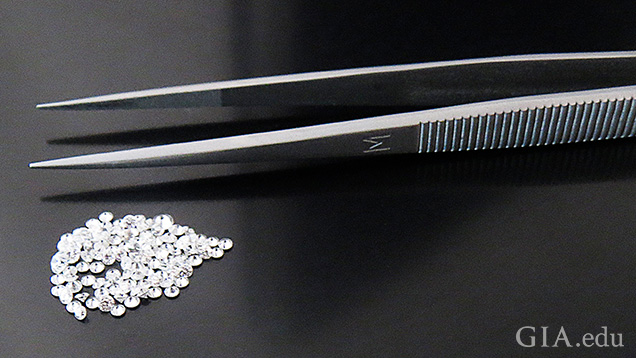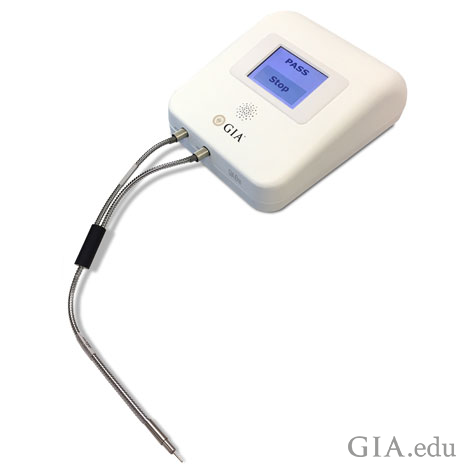De Beers Sees Growing Diamond Demand
August 23, 2017

The second half of 2017 will see slow but steady growth in diamond demand, according to De Beers’ forecast. The company said that fall diamond jewelry sales in the U.S. are expected to rise modestly, while demand from India and China, which had been depressed, is likely to increase.
Company executives noted that rough prices have begun to rise as demand improves, even as the company has increased its rough sales some 7% by volume this year. The average price of rough sold at its five sights (cycles) was down an average of 12% through the first half of the year. That decline, according to De Beers, was caused by a shift toward smaller and lower quality goods, not a decline in the actual price of rough diamonds, which actually rose 4% on average.
The company said it is on track to produce and sell 32 to 33 million carats of diamonds this year, compared to 30 million carats in 2016.
The figures from the U.S. Department of Commerce support De Beers’ optimism. An uptick in consumer spending helped the U.S. economy pick up speed in the second quarter, to double its growth rate to 2.6%. Consumer spending had been slow for the first several months of the year, as retail figures attest.
Forecasts from the Federal Reserve have the U.S. economy and consumer spending continuing to grow at a modest 2% rate through the remainder of the year. Weak business investment and stagnant wages, however, remain a drag on higher growth.
At the same time, U.S. consumer confidence made a strong jump in July, according to the Conference Board, a research firm that developed the Consumer Confidence Index. The index rose 5 percentage points as consumers grew more optimistic about the economy. The percentage of consumers expecting business conditions to improve over the next six months increased from 20.1% to 22.9%, while those expecting business conditions to worsen declined from 10% to 8.2%.

IDENTIFYING SYNTHETIC DIAMONDS
The Summer 2017 issue of Gems & Gemology has several articles in the Lab Notes section about synthetic diamonds identified and analyzed in GIA laboratories this year.
Staff in GIA’s Hong Kong lab recognized that a stone submitted for an update service had very different properties from the original report. The color grade H was found to be far below the D noted on the original report, while the clarity grade IF did not agree with the earlier VVS1 grade. In addition, the diamond’s carat weight did not match the original report. The graders checked the report number inscription and found it had been faked. Further testing revealed the stone to be CVD synthetic with subsequent HPHT treatment.
Two other Lab Notes describe how new GIA instrumentation was used to separate natural diamonds from potentially synthetic stones. Examination using GIA’s Melee Analysis Service of a parcel of 323 colorless to near-colorless melee diamonds confirmed that 219 were natural. Detailed further analysis determined that the parcel contained 101 CVD-produced synthetics. The average weight of the diamonds was .015 carat (ct).
Staff at GIA’s Hong Kong lab used a prototype of the GIA iD100 gem screening device to examine a ring containing 70 melee in addition to a marquise-cut diamond center stone. All but one of the melee passed the test for natural diamond, the other was referred as possible synthetic diamond. Further testing determined that it was an HPHT synthetic diamond.
In the final note, a 0.33 “Fancy blue” diamond was found to have an 80-micron thick CVD coating doped with boron over a near colorless natural diamond. This was the first such CVD overgrowth GIA has encountered.
TRADE
The Russia sanctions bill that was enacted by U.S. Congress recently is unlikely to have a direct effect on Alrosa or Russia’s diamond industry – at the outset at least. The bill targets the country’s natural gas and weapons export industries.
Alrosa executives said the bill would have little effect on its operations because the company does not borrow from European or U.S. banks or source a significant amount of its mining equipment and technology from U.S. companies.
Because the bill allows sanctions to be extended beyond their current scope, however, Alrosa is keeping a wary eye.
“The potential difficulties this (potential sanctions on diamonds from Russia) may cause in our company will be incomparable with the global consequences for the entire international diamond market, including diamond exchanges in Europe and other countries,” Alrosa president Sergey Ivanov said in a press statement.
Alrosa is the world’s largest diamond producer of rough diamonds by volume, accounting for 29%, versus De Beers’ 24%.
Sanctions targeted at specific diamond producing nations in the past – South Africa in the 1980s and recently Zimbabwe – have never been very effective. In addition, the 17% tariffs on polished diamonds entering the U.S. from the then-Soviet Union during the 1960s through the 1980s were largely ignored or circumvented.
A potentially tragic flood at Russia’s Mir diamond mine has left eight miners missing and put the mine on indefinite shutdown while rescue and pumping operations are proceeding. About 150 miners were rescued after ground water began rushing into the mine’s underground operation.
AUCTIONS
The 1,109 ct Lesedi la Rona diamond is back on the sales block. A year after its owner Lucara Diamond Corp. attempted to auction the stone – the second largest gem quality diamond ever found – through Sotheby’s, the company says it may seek a partner to cut and polish the rough, then divide the sales proceeds according to a pre-agreed percentage.
Lucara values the diamond at $70 million or $63,200 per carat before cutting. At a 40% yield – the average for a very large diamond – the per-carat cost would rise to $105,200, without factoring in labor costs.
No color or clarity estimates have been publicly stated for the Lesedi La Rona, but very large (50 carats and higher) polished D Flawless diamonds have fetched $160,000 to $180,000 per carat, while some with extraordinary provenance, such as Elizabeth Taylor’s stone, have brought a lot more.
Russell Shor is senior industry analyst at GIA in Carlsbad.



